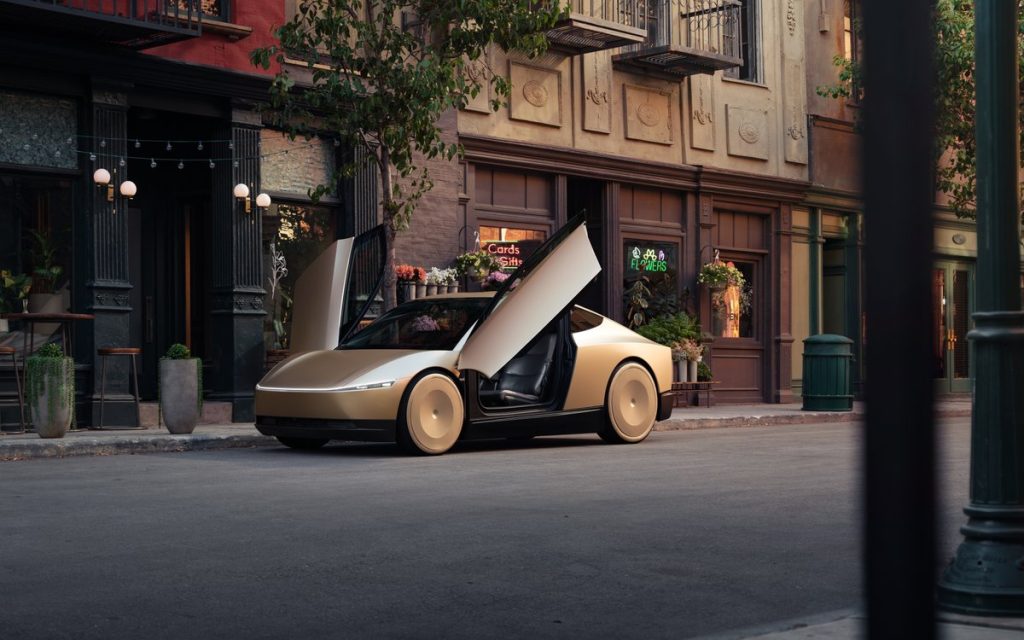Tesla unveiled its new electric robotaxi, the Cybercab, during an event at Warner Bros. studios, revealing a vehicle that promises to redefine the autonomous driving landscape.
With a price tag of less than $30,000, the Cybercab is expected to hit the roads in the next two years, though Tesla CEO Elon Musk acknowledged that the timeline might extend to 2027.
Robotaxi details pic.twitter.com/AVSoysc6pS
— Tesla (@Tesla) October 11, 2024
The vehicle features a futuristic design with butterfly-wing doors, no steering wheel or pedals, and is equipped with wireless induction charging as standard, making it Tesla’s first vehicle to adopt this feature.
The Cybercab, also referred to as a “robotaxi,” was presented in a gold finish, and multiple prototypes were on display during the event. It is a two-seater with a spacious hatchback trunk but lacks a rear window.
The vehicle is designed with a light bar and matrix headlights, resembling the styling seen on the Tesla Cybertruck. Despite the limited technical details provided at the event, Musk estimated the operating cost of the Cybercab at $0.20 per mile, a figure that aligns with his vision for making autonomous rides more affordable than traditional public transport.
Musk noted that Tesla had 20 Cybercabs at the event, with an additional fleet of 50 autonomous vehicles, some of which were Model Y cars. Tesla also shared a brief video showing an automated cleaning system for the robotaxi, highlighting the company’s focus on making the vehicle fully autonomous and self-sufficient.
Wireless charging, which has not gained widespread adoption in the EV market, is expected to be more relevant for autonomous vehicles like the Cybercab, allowing them to charge without human intervention.
While the Cybercab is aimed at autonomous ridesharing, Musk confirmed that consumers would be able to purchase the vehicle, expanding its use beyond Tesla’s planned ridesharing fleet.
However, skepticism remains regarding Tesla’s ability to deliver a fully self-driving vehicle, as the company has repeatedly missed its targets in this area. Since 2016, Tesla has been selling cars with the promise of future self-driving capabilities, but the technology is still not fully operational.
The Cybercab relies on Tesla’s AI5 onboard computer and uses a camera-based system for autonomy, much like Tesla’s current vehicles equipped with Full Self-Driving (FSD) technology.
Musk reiterated that FSD could become unsupervised in Texas and California next year, although this claim has been made in previous years without coming to fruition. While Tesla has made incremental improvements in its autonomous driving system, the Cybercab’s success will depend heavily on the company’s ability to significantly enhance its self-driving technology.
